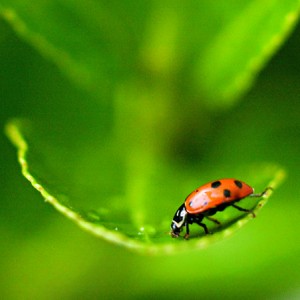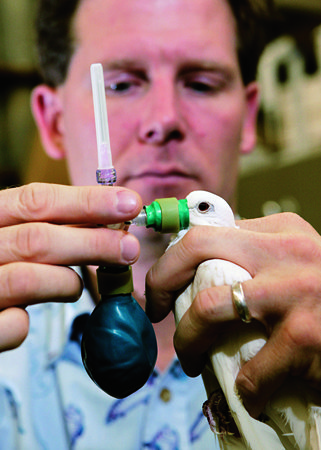A recent BYU ladybug study has important money-saving implications for farmers and gardeners.

Not all ladybugs were created equal, according to BYU research on the tiny predators. Photo by Steve Walters.
The study, published recently in the academic journal Environmental Entomology, found that an exotic species of ladybug survives, and even thrives, in much colder temperatures than its North American cousins. A team of researchers, led by Gary M. Booth, professor of integrative biology, compared native North American ladybugs called convergents with an imported species of Asian ladybugs, both of which are widely used by farmers and gardeners as a substitute for chemical pesticides. However, the Asian ladybugs have been steadily displacing the convergent ladybugs, even though both species eat the same food and live in the same habitat.
Unable to detect any outside factor explaining the exotic species’ success, Booth and his team examined the ladybugs’ internal physiology. After measuring body heat and carbon dioxide, the researchers found that although both species performed well at high temperatures, the Asian ladybugs could run around in temperatures at which the convergents were sluggish. In the wild, Asian ladybugs are therefore able to eat, reproduce, and move around much more easily in cold climates than convergent ladybugs, giving them a distinct advantage.
“Any kind of creature that can perform better at cooler temperatures, they’ll likely displace the species that can’t cut it when it’s cold,” Booth says. “The fact is, species with the ability to metabolize, respire, feed, and so forth at lower temperatures means that they’re going to be much more competitive. Farmers can use this information to improve their use of ladybugs.”









